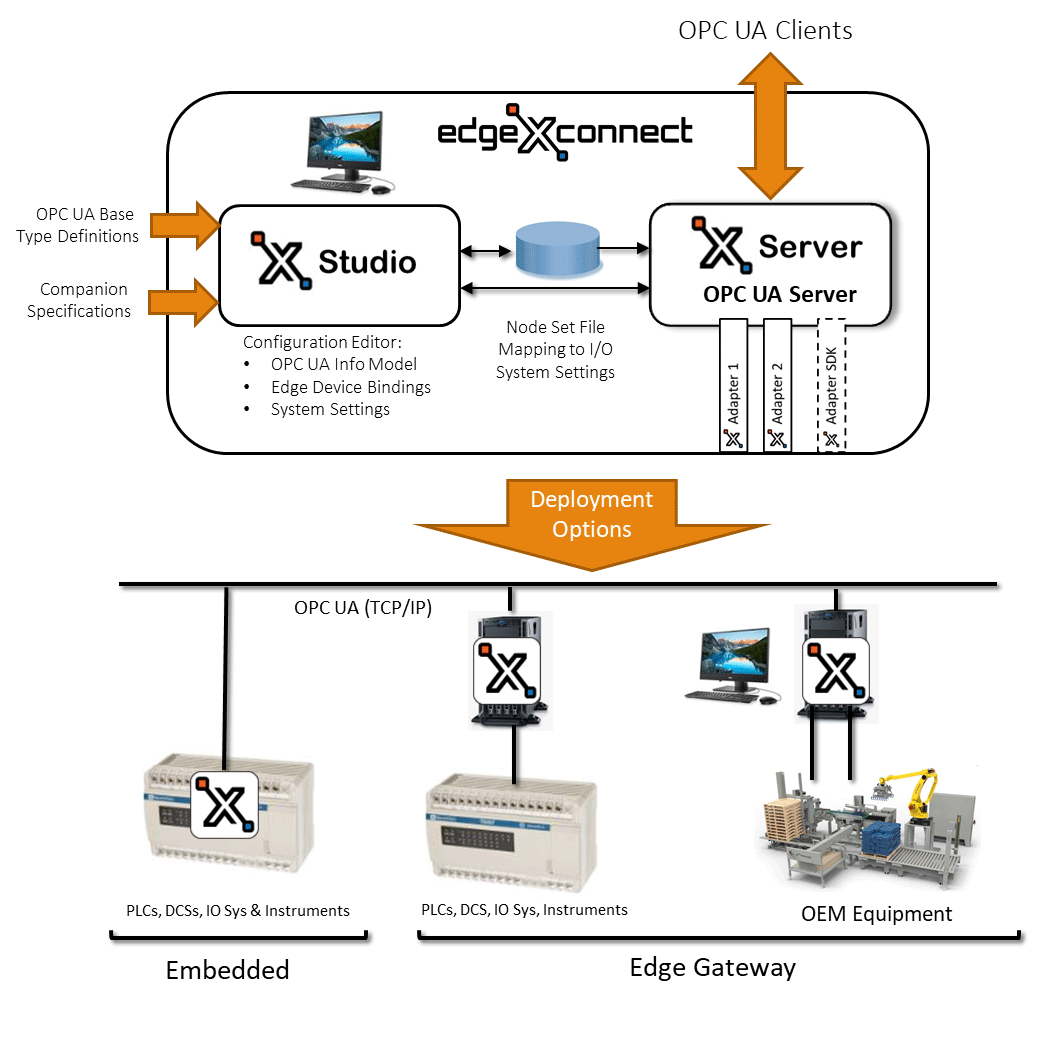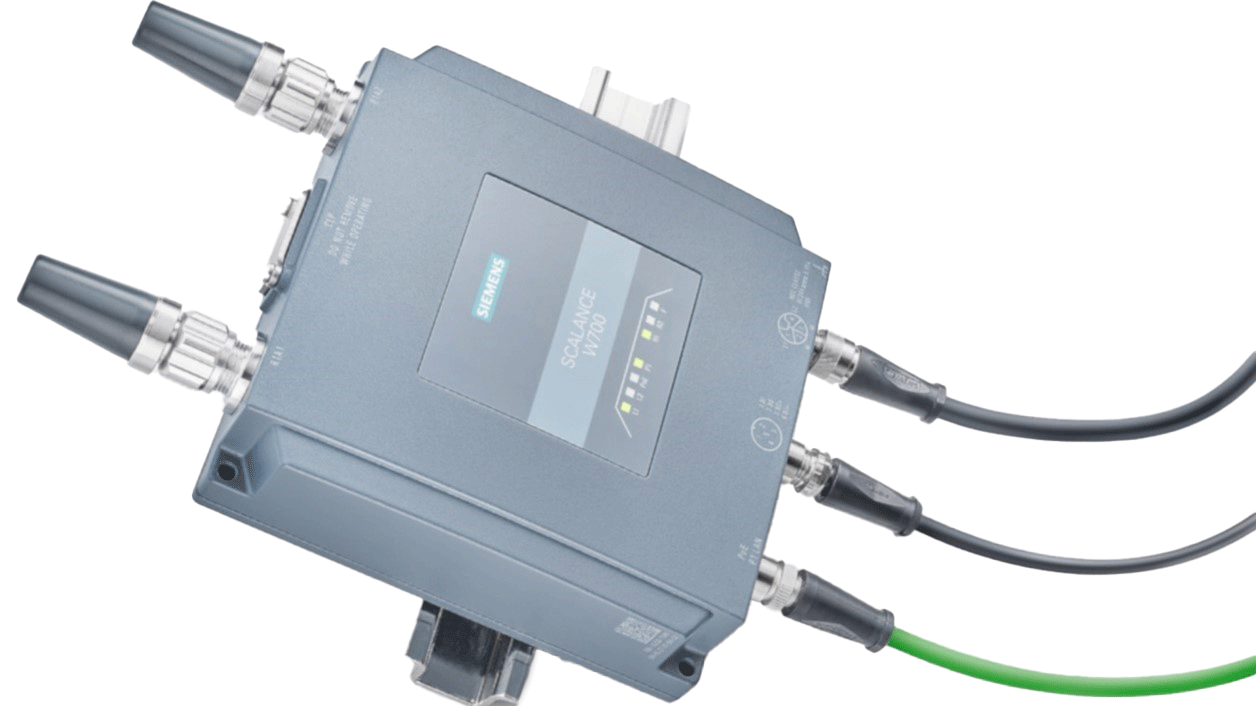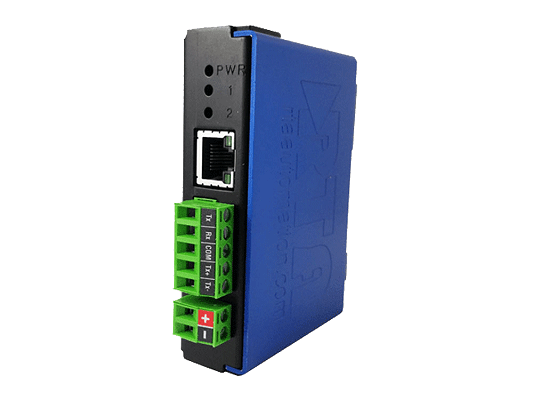
FACTORY OF THE FUTURE
John Sprovieri // Chief Editor
New types of hardware will be needed to collect, route, process and display manufacturing data.
Computer Hardware
for Industry 4.0
Animation courtesy gorodenkoff, Creatas Video+ / Getty Images Plus

If the factory of the future will run on data, new types of hardware will be needed to collect, route, process and display it. That means more than just new PLCs, but gateways, edge computers, tablets and other hardware.
Here’s a look at some of the latest technology.
OPC UA Server Gathers Data From the Edge
EdgeXConnect is an off-the-shelf, 100 percent configurable no-code OPC UA server for Linux and Windows platforms that manufacturers can use to quickly expose edge device data to other systems. Photo courtesy Beeond Inc.

EdgeXConnect from Beeond Inc. is an off-the-shelf, 100 percent configurable no-code OPC Unified Architecture server for Linux and Windows platforms that manufacturers can use to expose edge device data to other systems. EdgeXConnect supports all OPC UA companion specifications, providing a flexible and easily maintained server that control engineers can deploy quickly.
“Our objective with EdgeX is to make it easy and affordable to add OPC UA to any edge device,” says Stan Brubaker, president of Beeond, a company focused on providing OPC UA technology and services to help automation vendors and manufacturers transition their systems to the Industrial Internet of Things (IIoT). “The traditional approach was to buy a software development kit and spend months to build a limited functionality OPC UA server; and it was not uncommon, for these UA Servers to have hard-coded links to the edge device I/O and be difficult to change and maintain. EdgeX changes that paradigm because it can be installed, configured, and used in minutes. EdgeX is ideal for OEMs that do not have the resources or budget to develop their own server.”
Two key features make EdgeX unique. The first is that any of the existing OPC UA companion specifications can be imported into EdgeXStudio and modified or used as is. The second is that the information model can be linked to the edge device I/O through configuration, then deployed to the EdgeXServer with one click. No software development is needed.
“The OPC UA standard for interoperability between systems, from sensors to the cloud, is being adopted worldwide by industrial automation vendors and the user community,” notes Costantino Pipero, founder and CTO of Beeond. “But it is a high hurdle for many companies, because of the cost and skill set previously needed to develop an OPC UA server. With EdgeX, that changes because it is now a buy rather than a build decision. Our mission is to help companies adopt OPC UA, so they realize the business benefits of lower system integration cost and improved information sharing throughout their enterprises.”
For more information, click https://beeond.net.
Gateway Appliances With Integrated Database Server
The IIoTA gateway appliance includes an integrated database server. It can be configured to operate entirely as a stand-alone device; no enterprise network is required. Photo courtesy elliTek

The IIoTA and IIoTA Mini gateway appliances from elliTek include an integrated database server. They can be configured to operate entirely as stand-alone devices; no enterprise network is required.
Because the data server is locally integrated, data can be captured without the need for an external storage area. This allows a stand-alone production line to meet traceability and defect escape prevention requirements without implementing a costly network infrastructure.
Both the IIoTA and IIoTA Mini have an integrated hardened gateway. This hardware separation of the operation technology network from the information technology network provides a secure system that cannot be penetrated by malware. Because of the 1-to-1 NIC port to NIC controller ratio, any attempts to bridge or link ports become virtually impossible, since only one network is referenced across each layer.
The IIoTA is the same form factor as the company’s Data Commander appliance, but with higher performance and three times more memory. The appliances can be used to provide engineers with real-time information for manufacturing execution systems, statistical process control, quality assurance and control, key performance indicators, and Six Sigma feedback.
The IIoTA platforms eliminate network latency or high-level connection concerns, and they enable manufacturers to continue production despite network connection downtime events.
For more information, click www.ellitek.com.
Wi-Fi 6 for Industrial Applications
The Scalance WUM766-1 industrial client module is the first such device to meet the Wi-Fi 6 standard, enabling reliable and high-performance wireless connectivity. Photo courtesy Siemens

The Scalance WUM766-1 industrial client module from Siemens is the first such device to satisfy the latest wireless LAN standard IEEE 802.11ax (Wi-Fi 6), enabling reliable and high-performance wireless connectivity. By combining the module with Scalance access points, engineers can implement demanding Industry 4.0 applications, such as augmented reality or remote-controlled cranes. With gross data transmission rates of 1,201 megabits per second, the access points can link a large number of mobile devices in confined spaces—for example shuttle systems in intra-logistics and material handling applications.
The network components can also be used outside of control cabinets, in rail applications and in hazardous areas, thanks to their industry-specific approvals and their compact and robust design with IP65 protection. Specific mobile devices in networks can also be deactivated using a sleep-mode function combined with a digital I/O interface. This helps save energy and extend the service life and maintenance cycles of battery-powered mobile devices connected via WLAN. This enables energy-efficient operation of automated guided vehicle fleets, for example.
The new components will also be equipped with an additional function especially for industry called industrial parallel redundancy protocol for redundant data communication via WLAN, providing highly available wireless communication and maximum availability for critical services. This function can be enabled using CLP removable storage medium. The CLP also enables the easy change-out of devices in the field, as it stores the configuration and simply transfers it to the replacement device when it is reconnected.
For more information, click here.
MQTT Gateway Moves Factory Floor Data to the Cloud
With an MQTT protocol gateway, engineers can easily move industrial device data to cloud applications, such as AWS IoT Core, IT or enterprise systems. Photo courtesy Real Time Automation

The 460 industrial gateway from Real Time Automation (RTA) is now available for the MQTT protocol. MQTT, which stands for Message Queueing Telemetry Transport, is a flexible protocol that connects IT and OT systems by moving data across the factory floor and into cloud applications.
With an MQTT protocol gateway, engineers can easily move industrial device data to cloud applications, such as AWS IoT Core, IT or enterprise systems. The 460 MQTT gateway makes communication with cloud applications accessible. From there, manufacturers can configure their industrial device data to schedule predictive maintenance, monitor system healthand measure and analyze OEE.
Like with all RTA gateways, the MQTT family of gateways are customizable, allowing manufacturers to pick single tags; user-defined tags (for Allen-Bradley PLCs); data space blocks (for Siemens PLCs); and other data using any one of the many protocol drivers in the RTA protocol suite.
Some advantages of using MQTT on the factory floor include its one-to-many publish-subscribe architecture, a lightweight code footprint, optional TLS security and small data packets.
“The 460 MQTT gateway has the same easy, browser-based configuration as our other 460 gateways. Plus, you’ll get our standard five-year warranty and access to our industry-leading support team,” says John S. Rinaldi, founder and CEO of RTA.
For more information, click www.rtautomation.com.
High-Speed Wireless Access Point for Challenging Environments
Designed to address the high-throughput requirements of dense industrial applications, the ARS-7235-5E-AC wireless access point supports a net data rate of up to 867 megabits per second. Photo courtesy Antaira Technologies

Antaira Technologies has expanded its wireless communication portfolio with the introduction of the ARS-7235-5E-AC dual-band 802.11a/b/g/n/ac WLAN access point with added router capabilities and five gigabit Ethernet ports.
Designed to address the high-throughput requirements of dense industrial applications, the ARS-7235-5E-AC supports a net data rate of up to 867 megabits per second with 2x2 MIMO future-proof communication. It is embedded with the Qualcomm IPQ4029 SoC chip set, so it can concurrently operate on both the 2.4 or 5 gigahertz bands. In addition, it is backwards-compatible with 802.11a/b/g/n deployments to maximize existing wireless investments.
The ARS-7235-5E-AC gives IT professionals the flexibility to balance required wireless coverage with the need for faster, easier deployments, thanks to its compact dimensions, DIN-rail or wall mountable options, secure WPA3 encryption, and low voltage input of 9 volts. Five gigabit Ethernet ports enable connectivity to laptops, PCs and other wired devices. In addition, it is capable of operating in different modes, which makes it suitable for a variety of wireless applications, including long-distance deployments.
Like all Antaira wireless devices, the ARS-7235-5E-AC-T is engineered to deliver reliability in harsh environments with a wide operating temperature of -35 to 70 C, an IP30 metal housing, and industrial-grade resistance to shock, vibration, power surges and EMI.
For more information, visit www.antaira.com.
Intelligent Edge Controller for Remote Asset Monitoring
This intelligent edge controller can help companies monitor sensors or remote-control assets over long-range, low-power wide area networks. Photo courtesy Digi International

Digi International has introduced the Digi XBee Intelligent Edge Controller, a comprehensive networking architecture that closes the gap between field devices and the cloud and provides for asset monitoring and control.
In combination with Digi X-ON cloud, the controller can help companies monitor sensors or remote-control assets over long-range, low-power wide area networks, including LoRaWAN, CAT-M1 and NB-IoT. Industrial devices can be monitored with subsecond latency with alarms and data wirelessly delivered through the Digi X-ON cloud.
The controller is compatible with 90 percent of industrial sensors and controls, providing SCADA systems with an IoT alternative. Using Digi’s X-ON cloud platform, manufacturers leverage a single platform to convert complex protocols for the industrial IoT into simplified data APIs, to integrate data with other tools and systems.
“Two of the biggest challenges companies face in industrial IoT projects are money and time,” says Nik Kitson, director of OEM solutions business development for Digi. “Traditional SCADA systems are very expensive and can take months to deploy and configure for a company’s specific needs. A new system or software package often involves a substantial learning curve and employee training time. But remaining with a nonsecure or outdated system can cost far more in the long run. Unlike legacy systems that could only leverage the tools available at the time, Digi developed the controller using today’s most advanced technologies to create a more intelligent, secure and cost-effective solution.”
Traditional SCADA systems have typically relied on extensive middleware—including gateways, software, and licenses—raising the risk of unauthorized data access and other security breaches. Industrial IoT protocols add security as an afterthought and require users to enable those features. The combination of complex technology infrastructures, communications interoperability challenges, and immature IoT standards creates enormous hurdles for automation engineers. Additionally, standard SCADA and PLCs often require high network bandwidth and cloud capacity to provide subsecond monitoring.
For more information, click www.digi.com.
ASSEMBLY ONLINE
For more information on industrial computing, visit www.assemblymag.com to read these articles:
Translating Manufacturing Data for the IIoT
Edge Computing for Today’s Assembly Plant
FACTORY OF THE FUTURE AUGUST 2022
